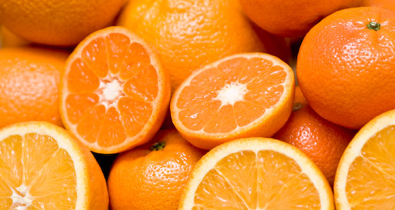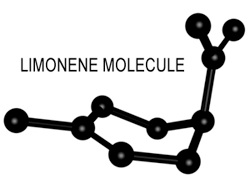 Do you smell something? Odor molecules are really small, at most a few nanometers in size. They have to be small to be smelled. Something has an odor because some of the molecules (remember that all things are made of atoms) found in something like an orange make their way from the orange through the air to your nose. The odor molecules float around in the air, moved by the air currents. As you move further away from the orange it smells less. That is because the concentration of odor molecules is diluted by more and more air.
Do you smell something? Odor molecules are really small, at most a few nanometers in size. They have to be small to be smelled. Something has an odor because some of the molecules (remember that all things are made of atoms) found in something like an orange make their way from the orange through the air to your nose. The odor molecules float around in the air, moved by the air currents. As you move further away from the orange it smells less. That is because the concentration of odor molecules is diluted by more and more air.
We smell things because there are tiny receptors found on cells that are inside of our nose. These receptors are small measuring less than tens nanometers across. Is that small? Well it depends. Remember that the odor molecule is a lot smaller, about ten times smaller. The odor molecules drift along in the air until they are sucked in when we take a breath. If there is the right receptor, the odor molecules binds to it and then transmits a signal to our brain. Once there our brain processes that signal and ah ha! we realize that we have smelled something good like an orange or something stinky like a skunk.
 Most things that have an odor have lots of different molecules that make up that odor. So smells are not simple. Sometimes scientists know the molecules that make up an odor sometimes not. Oranges have an odor molecule called limonene and limonene is found in other things like lemons! That is why lemons and oranges smell kind of the same but also kind of different.
Most things that have an odor have lots of different molecules that make up that odor. So smells are not simple. Sometimes scientists know the molecules that make up an odor sometimes not. Oranges have an odor molecule called limonene and limonene is found in other things like lemons! That is why lemons and oranges smell kind of the same but also kind of different.
Scientists use different tools to understand what molecules make up a particular odor. Then they can recreate those odors for different kinds of products. Even the smell of a new car can be created and you can make your old car smell like a new one!
But can we move around individual odor molecules? It isn’t easy because at the nanometers scale, molecules are in constant motion. So they are hard to pick up. You need to cool them to almost absolute zero which is –460°F. Even then it is really hard because you need to have only a few molecules around. To read more about that see how you move atoms.
